The ESV Study Bible is one of the most popular study Bibles on the planet. It’s also the most popular study Bible among Bible Buying Guide’s readers. This popular study Bible is now available in an Heirloom edition – complete with a goatskin cover. It’s printed in Italy by L.E.G.O. and bound in the Netherlands by Royal Jongbloed- an amazing Bible production combination. It has a lifetime guarantee. This edition uses the 2016 ESV text. ISBN: 9781433556883.
Honest review guarantee – Crossway provided this Bible in exchange for this review. I was not required to give a positive review – only an honest review. If it isn’t an honest review, then there would be a lot of returns- and returns are bad. And I would lose credibility- which is also bad. And then I’d never get another review copy. My reviews are always 100% honest. Always. Guaranteed.
___________________________________
Buy from Amazon
Buy from Crossway
___________________________________
Video Review
Cover and Binding
This edition is black goatskin. It’s thick and has a nice grain. It has perimeter stitching. There’s nothing printed on the front. The spine has four raised ribs and has the words Study Bible, ESV, English Standard Version, Crossway printed in gold.
The liner is edge-lined leather and it has a gilt line around the inside perimeter. I’m not sure what the leather is, but Crossway did mention that it isn’t calfskin. It does look like calfskin though. It’s Smyth sewn and has no problem laying open, but the edge-lined tab will need to break in a little bit before it lays flat.
It has black and gold head/tail bands and 4 ribbons (1 black and 3 in different shades of brown). The ribbons are nice and thick, but they’re a little short. They’re still long enough to pull to the corner to open the Bible. The overall size is 10 x 7 x 2.25″ and it weighs 4lbs, 3.8oz. It does feel like a large Bible. It’s great for study at a table or desk. If I were to carry one, I’d be more tempted to carry the Personal Size ESV Study Bible.
It includes a sturdy two-piece box and the Bible is wrapped in velvet. It includes a certificate that describes this edition.
Paper
The paper is 31gsm Thincoat Plus. It’s European and it’s a better quality paper than the Chinese paper in the regular edition. It has a decent level of opacity with a little bit of show-through. The show-through isn’t bad, but it is more than I had hoped. It’s mostly noticeable where the lines don’t match or in the poetic settings. It has an eggshell color that’s great for reading. It has no glare under direct light. It’s smooth but it isn’t coated, so it’s easy to grab and turn. The edges are art-gilt with red under gold. The pages have a nice copper color when closed and a salmon color when opened.
Typography
The text is presented in single-column paragraph format. References are placed in the inner margins and footnotes are placed under the text. Commentary notes are in a double-column layout at the bottom of each page. The header shows the book name, chapter, and verse numbers in the outer column and the page number in the center.
The font for the text is Lexicon 9-point black letter and the notes are 7.25. It has a good amount of leading (space between the lines) to help improve readability. The print is about a medium darkness and it’s consistent throughout. Headings are in italics. They’re easy to ignore while reading, and still helpful for scanning the page to find the context.
The text does include cross-reference and footnote keys. I find them easy enough to ignore for reading. Verse numbers are slightly bolder than the text. Even though they’re small, they’re easy enough to find for study or following along with someone.
The columns have 90 characters across, with around 16-20 words per line. This makes room for perfect poetic settings. Normally, this would be too many words per line for my tastes, but I don’t find it too difficult to read due to the text being on the flat part of the page and the text having enough leading to help.
References
It has 80,000 cross-references. They’re placed in the inner margin and are keyed to the text with numbers in bold. The top of the column shows the chapter number in bold. They’re excellent for study and sermon prep.
Here are a few examples to help you compare:
- Genesis 1:1 – Job 38:4-7; Ps 33:6; 136:5; Isa 42:5; 45:18; Jn 1:1-3; Ac 14:15; 17:24; Col 1:16, 17; Heb 1:10; 11:3; Rev 4:11
- Deuteronomy 6:4 – cited Mk 12:29; Is 42:8; Zech 14:9; Jn 17:3; 1 Cor 8:4, 6
- Isaiah 9:6 – Lk 2:11; Jn 3:16; ch 7:14; Matt 28:18; 1 Cor 15:25; ch 22:22; 28:29; 10:21, 17; Neh 9:32; Jer 32:18; Ps 45:3; Ps 72:17; ch 63:16; Jn 14:18; Ps 72:7; Eph 2:14; ch 11:69
- Matthew 17:20 – Jn 11:40; ch 6:30; 21:21, 22; Mk 11:23; Lk 17:6; ch 13:31; ver 9; 1 Cor 13:2; Mk 9:23
- Mark 11:23 – Mat 17:20; Ps 46:2; 1 Cor 13:2; Rev 8:8; Rom 4:20; 14:23; Jm 1:6; ch 16:17; Jn 14:12
- Mark 12:29 – Lk 10:27; cited from Dt 6:4, 5; Rom 3:30; 1 Cor 8:4; Gal 3:20; Eph 4:6; 1 Tim 1:17; 2:5; Jm 2:19; 4:12; Jude 25; Mat 19:17; 23:9
- John 1:1 – Gen 1:1; Col 1:17; 1 Jn 1:1; Rev 1:4, 8, 17; 3:14; 21:6; 22:13; Rev 19:13; Heb 4:12; 1 Jn 1:1, 2; ch 17:5; Phil 2:6
- Acts 2:38 – ch 3:19; 20:21; 26:18, 20; Lk 24:47; ch 22:16; 8:12; see Mk 16:16; ch 10:48; see ch 8:16; see Mk 1:4; ch 10:45; ch 8:15, 20; 11:17; see Jn 7:39
- 1 John 1:1 – see Jn 1:1; ch 2:13, 14; Ac 4:20; Jn 19:35; ch 4:14; Jn 1:14; 2 Pet 1:16; Lk 24:39; Jn 20:27
Footnotes
The standard 2016 ESV translation footnotes are placed under the text. They include explanations of the text, meanings of words, manuscript variations, meanings of names, Hebrew and Greek definitions, alternate renderings, weights and measures, etc. They are helpful for shedding light on the translation itself.
Family Records
The front includes several family pages on thick paper. They include the presentation page, marriages, births/adoptions, and deaths. These are included along with the end-sheets that help strengthen the structure.
Section and Book Introductions
It includes an introduction to each major section (such as the Old and New Testaments, between the Testaments, Prophetic Books, etc.). They include information about key people, themes, scholarly issues, pronouns used, timelines, reading tips, etc. They also include a chart of the books within that section.
The book introductions are detailed and have around 5-6 pages for most of the books. They discuss the author and title, date and location, theme, purpose, occasion, and background, key themes, history of salvation summary, timeline, and include a detailed outline. Some have maps to show where events took place. Some cover a key event.
Study Material
Study material includes notes, charts, maps, illustrations, timelines, and articles that were created by a team of 95 Bible scholars and teachers from 9 countries, 20 denominations, and 50 seminaries, colleges, and universities. It describes the study tools as being equivalent to a 20-volume Bible resource library. The introduction in the front discusses the tools and the doctrinal perspective. There are several indexes in the back for maps and articles. As always, I recommend using them for reference and do your own study.
Notes – 20,000 notes that include commentary, Hebrew and Greek definitions and explanations, references to similar passages or passages that explain or expand on the note, etc. They are extensive and many of them cover more than one point of view.
Maps – it includes 2o0 full-color maps within the notes. The maps were created using the latest satellite imagery, digital technology, and cartography techniques, and they’re based on archaeological scholarship.
Illustrations – it has 40 illustrations of biblical structures, cities, and objects. They’re researched and rendered by architectural illustrators.
Charts – it has over 200 charts that provide insights into the text.
Articles – 50 articles cover major topics with most having multiple subtopics. Some are doctrinally based while others cover topics such as studying the Bible, biblical manuscripts, the original languages, reading the Bible, interpretation, the canon of Scripture, Biblical archaeology, etc.
Main topics include:
- God’s Plan of Salvation
- Biblical Doctrine
- Biblical Ethics
- Interpreting the Bible
- Reading the Bible
- The Canon of Scripture
- The Reliability of Bible Manuscripts
- Archaeology and the Bible
- The Original Languages of the Bible
- The Septuagint
- How the NT Quotes and Interprets the OT
- The Bible in Christianity
- The Bible and World Religions
- The Bible and Religious Cults
- History of Salvation in the OT
Concordance
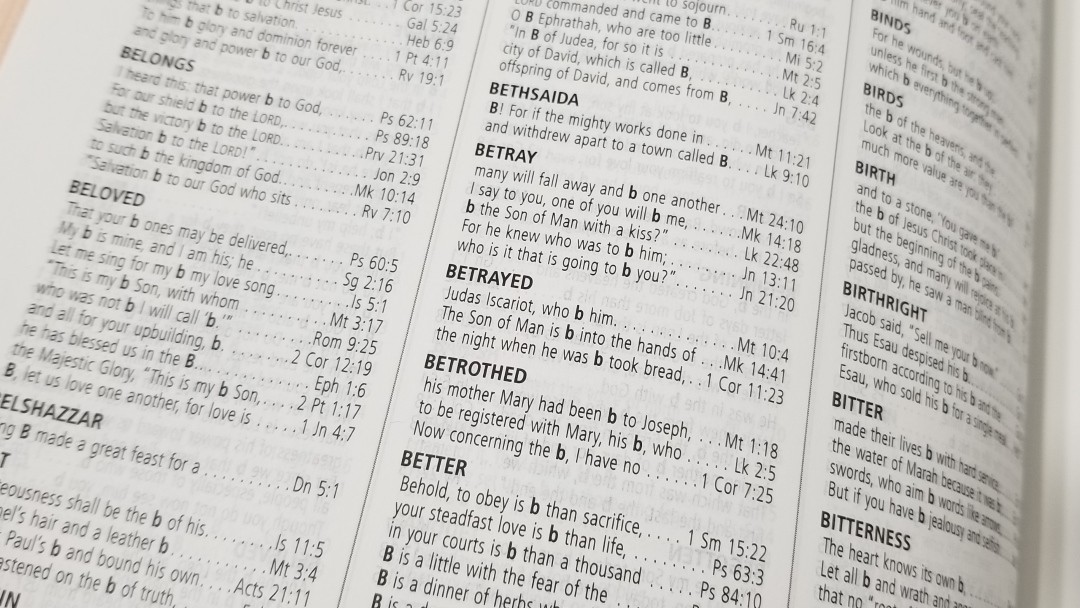
The concordance is 77 pages with three columns per page. It has a lot of entries and it does include proper names. This is an excellent concordance for study sermon prep. Here are a few sample entries with the number of references given for each one:
- Christ – 17
- Christ’s – 3
- Christian – 2
- Christs – 1
- Faith – 36
- Faithful – 12
- Faithfulness – 7
- Faithless – 2
- God – 56
- Goddess – 2
- Godliness – 6
- Godly – 4
- Gods – 4
- Praise – 11
- Praised – 4
- Praises – 3
- Praising – 4
- Pray – 13
- Prayed – 5
- Prayer – 11
- Prayers – 7
- Praying – 4
Daily Reading Plan
The daily reading plan takes you through the Bible in one year. It provides four readings per day from the Psalms and Wisdom Literature, Pentateuch and History of Israel, Chronicles and Prophets, and Gospels and Epistles. It provides this in a table with the day of the month and the references.
Maps
It has 15 full-color maps in the back printed on thick, semi-glossy, paper. The colors are the standard style that Crossway uses where colors are purposely toned down to create a washed-out look. There isn’t an index to maps but they’re labeled well. I found them easy to use. They include distance, journeys of Abraham, topography, possible and traditional routes of the Exodus, kingdoms, empires, realms, territories, dates, etc.
Maps include:
- The Middle East Today
- The World of the Patriarchs
- The Exodus from Egypt
- The Tribal Allotments of Israel
- Israel Under Saul, David, and Solomon
- The Kingdoms of Israel and Judah
- The Assyrian and Babylonian Empires
- The Persian and Greek Empires
- Israel Under the Maccabees (C. 164-63 B.C.)
- Jerusalem
- Palestine Under Roman Rule (C. 37 B.C.-A.D. 66)
- The Apostle’s Early Ministry
- Paul’s First and Second Missionary Journeys
- Paul’s Third Missionary Journey and His Voyage to Rome
- The Spread of Christianity in the First Two Centuries
Conclusion
The ESV Heirloom Study Bible is an amazing library of study material. It includes lots of notes, illustrations, maps, charts, and articles to make this an excellent resource for any student of God’s Word. It has some of the best articles about the authenticity of Scripture. Like always, I recommend using the study material for reference and do your own study.
I like this study Bible in every form that I’ve seen and the Heirloom edition is by far my favorite. This is a large Bible, so I’m not sure I would use it for carry, but it would be great for studying at a desk. The print quality is excellent. I wouldn’t mind if it were just a touch darker and the paper slightly more opaque, but that’s just me being picky. The goatskin cover, better paper, and ribbons make this edition a great choice for anyone interested in a high-quality study Bible.
___________________________________
Buy from Amazon
Buy from Crossway
___________________________________
Crossway provided this Bible in exchange for this review. I was not required to give a positive review – only an honest review. My opinions are my own.

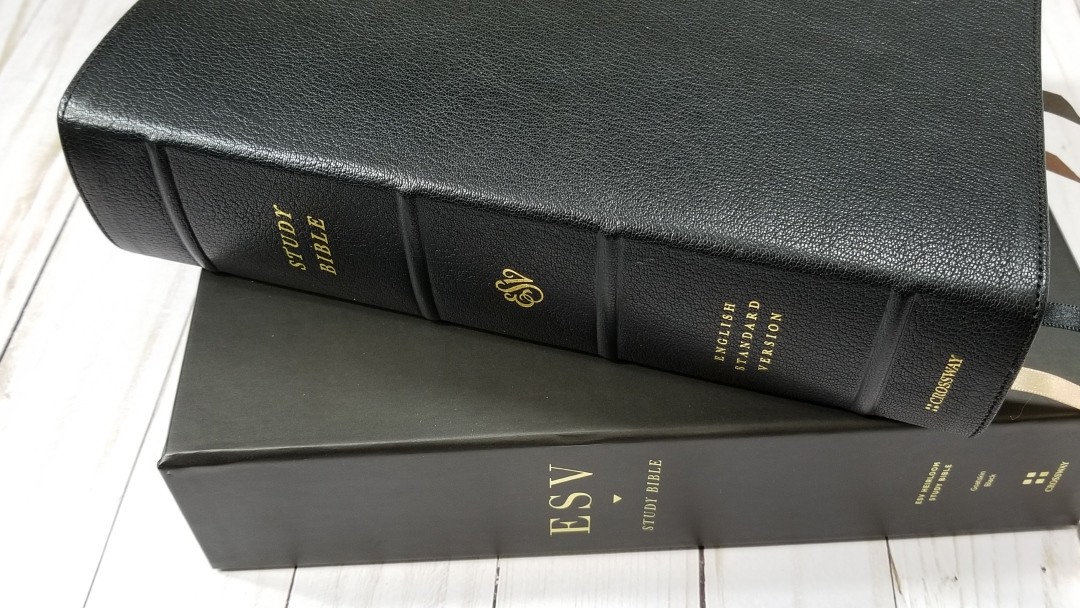
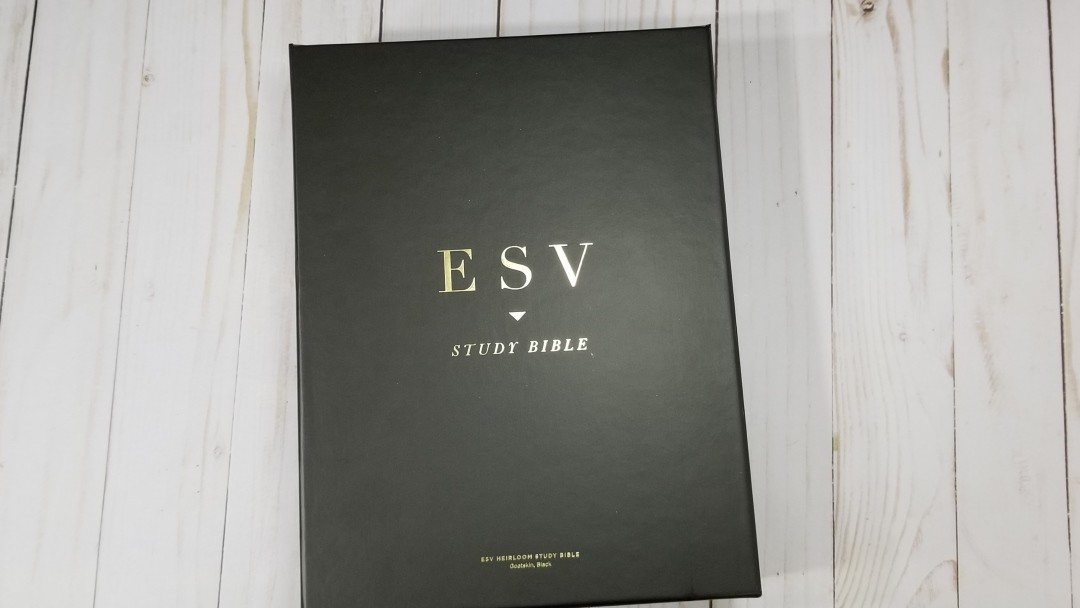
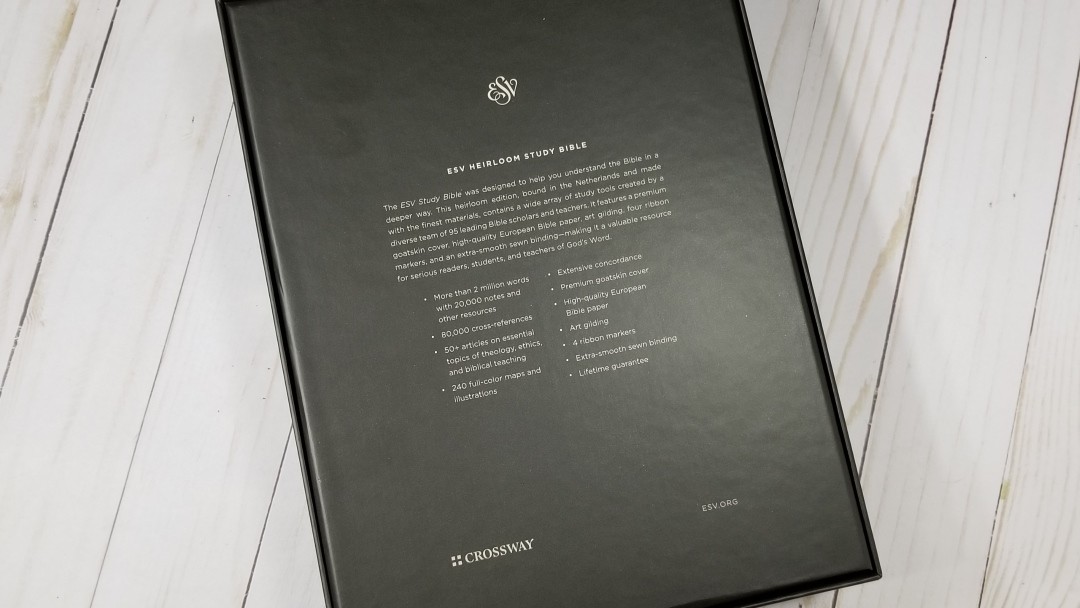
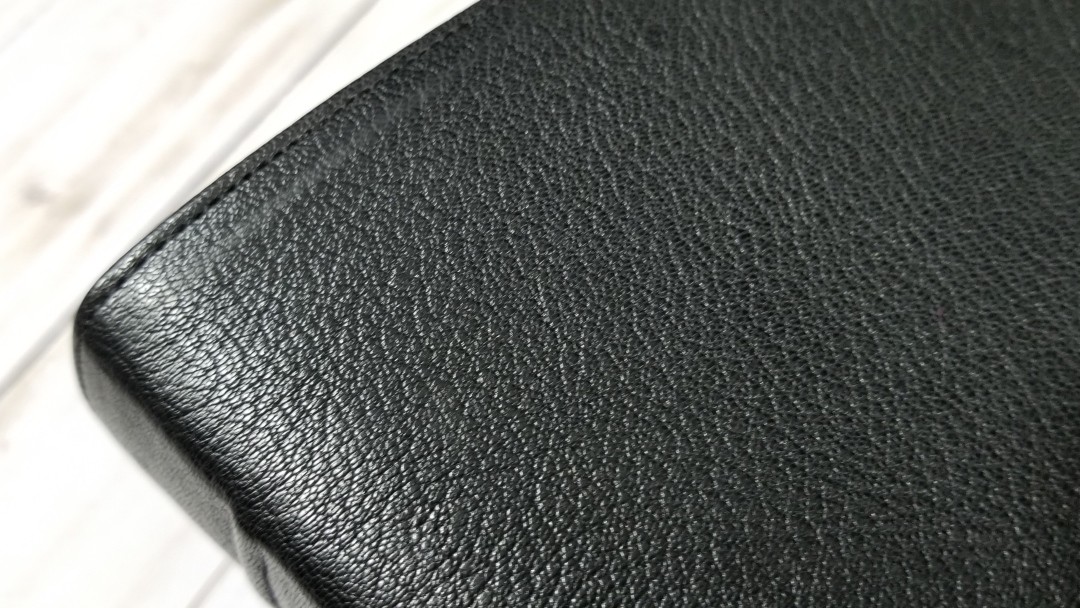
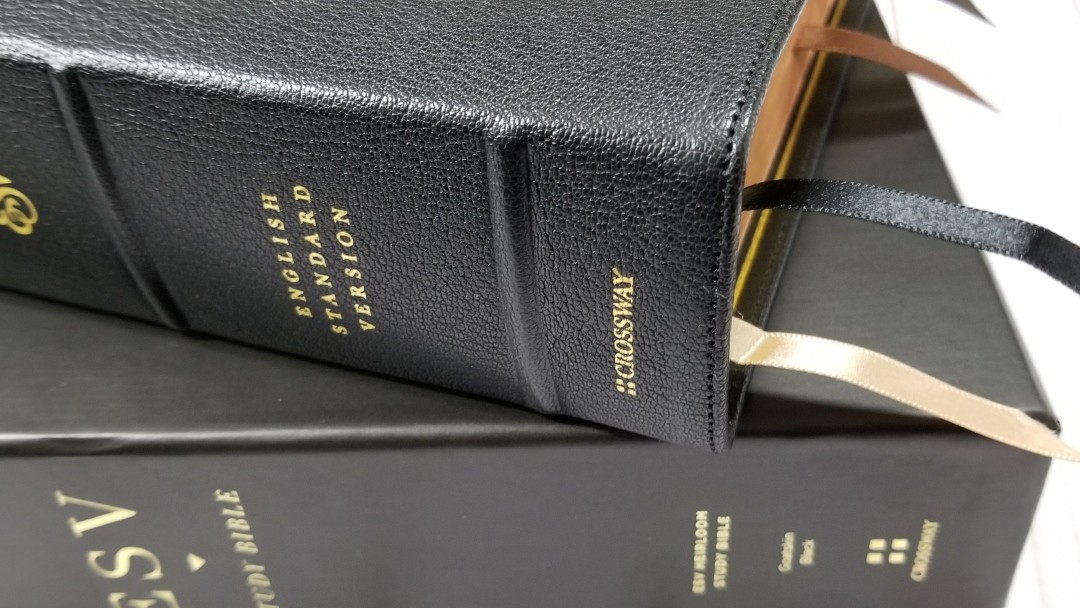

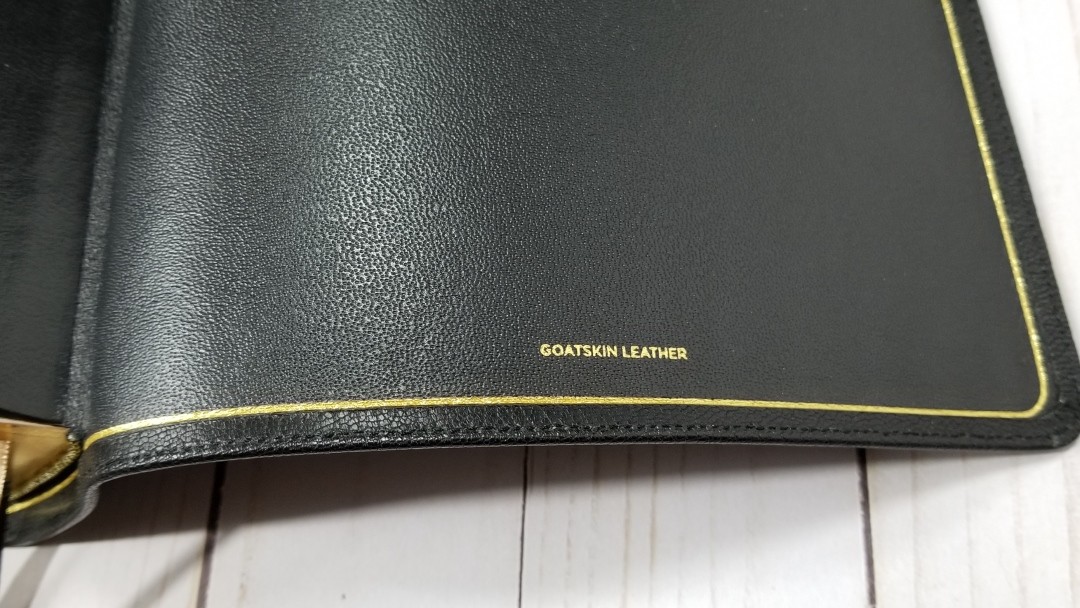


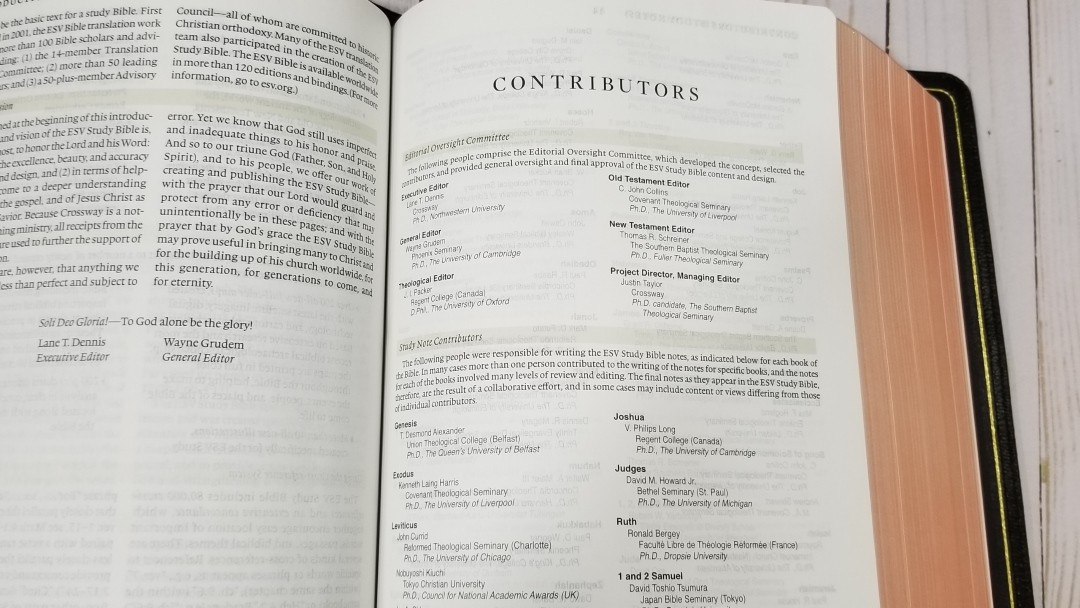
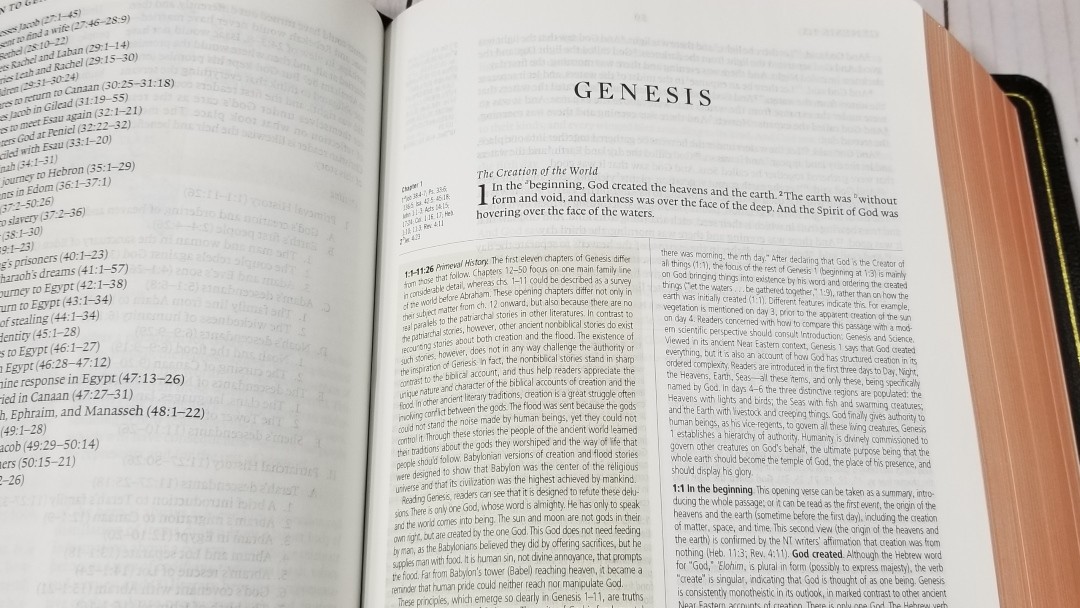
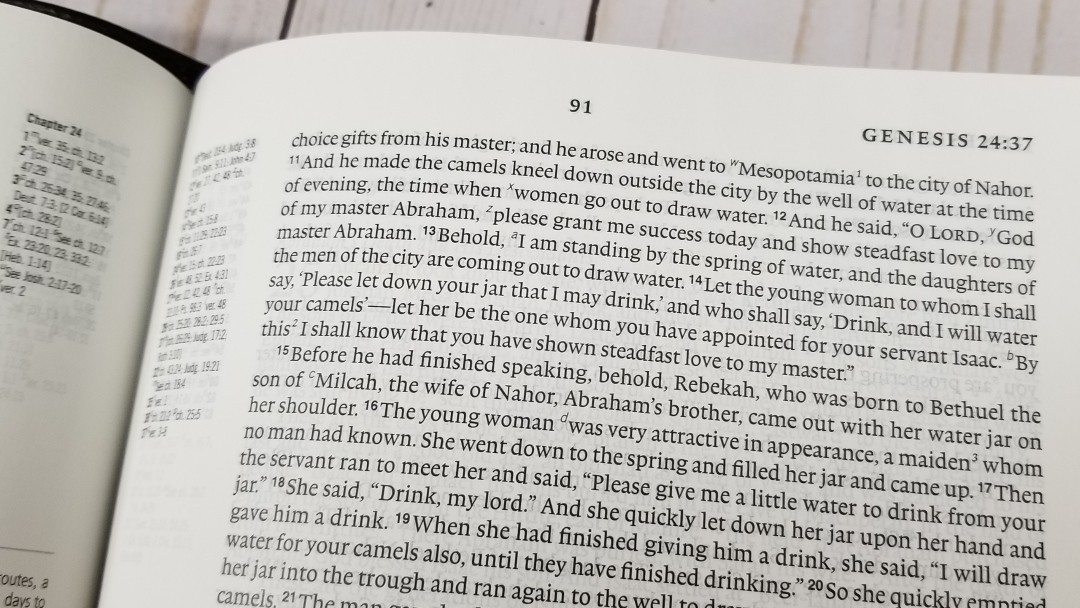
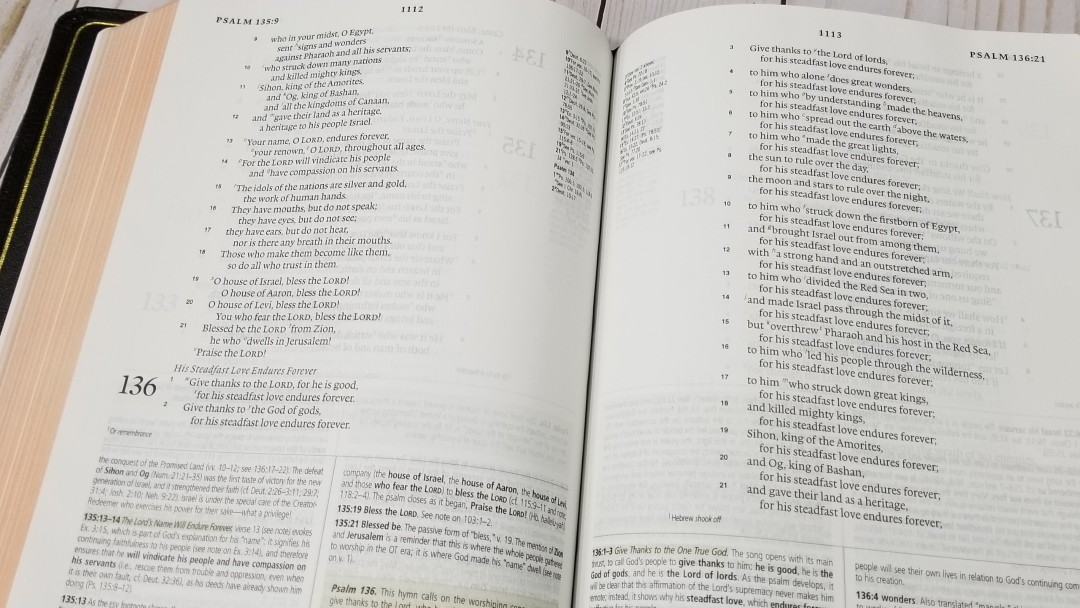
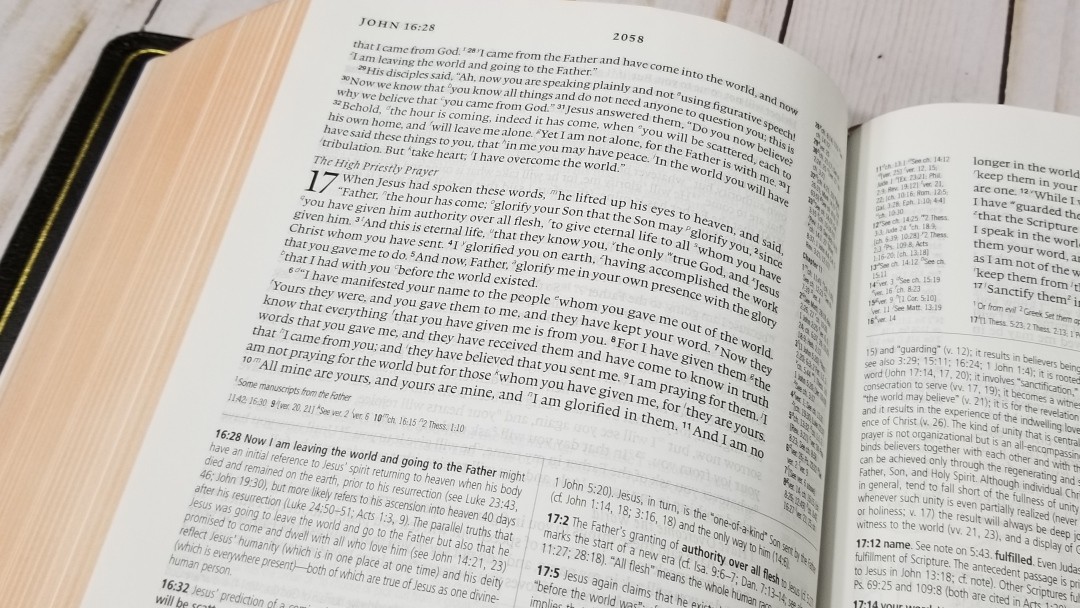
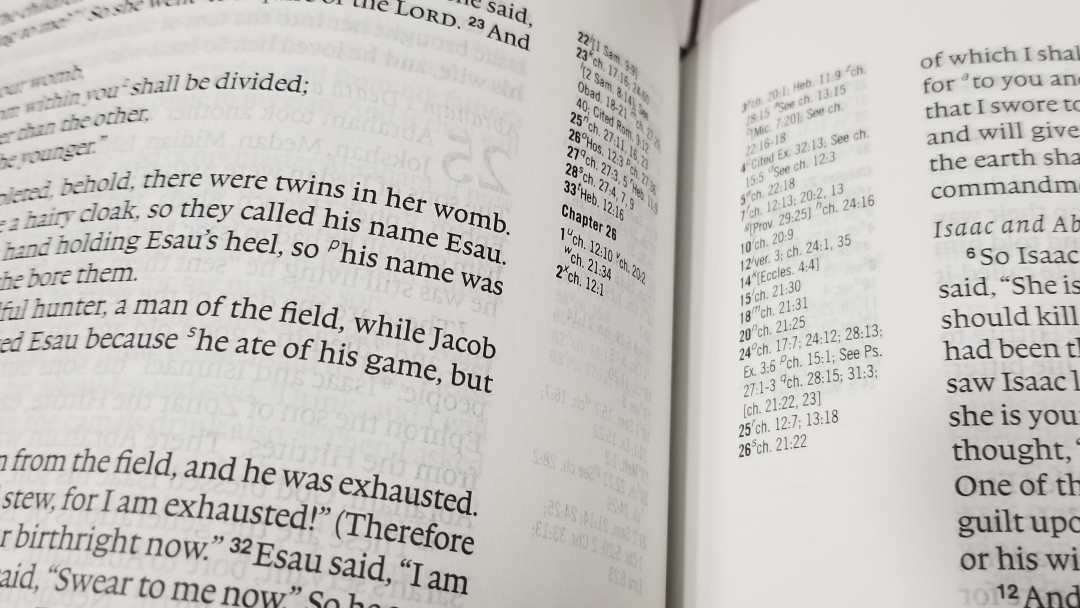
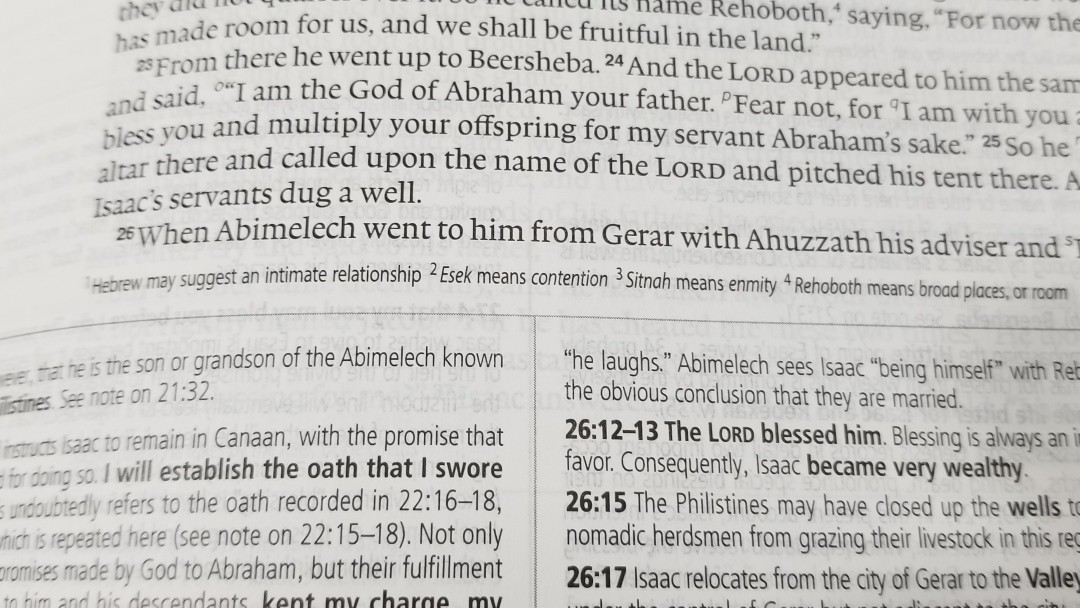
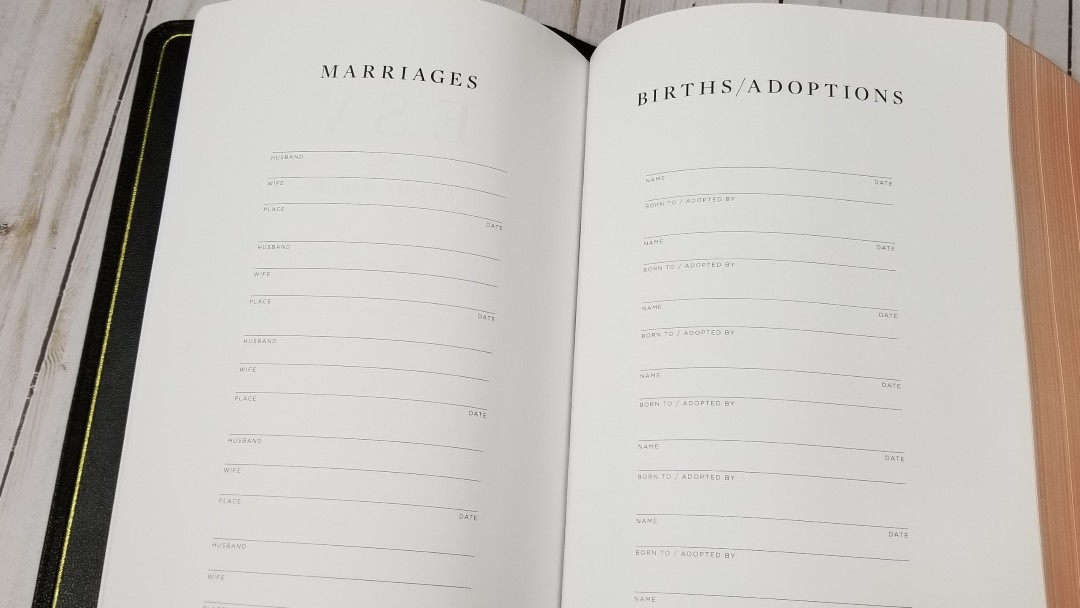
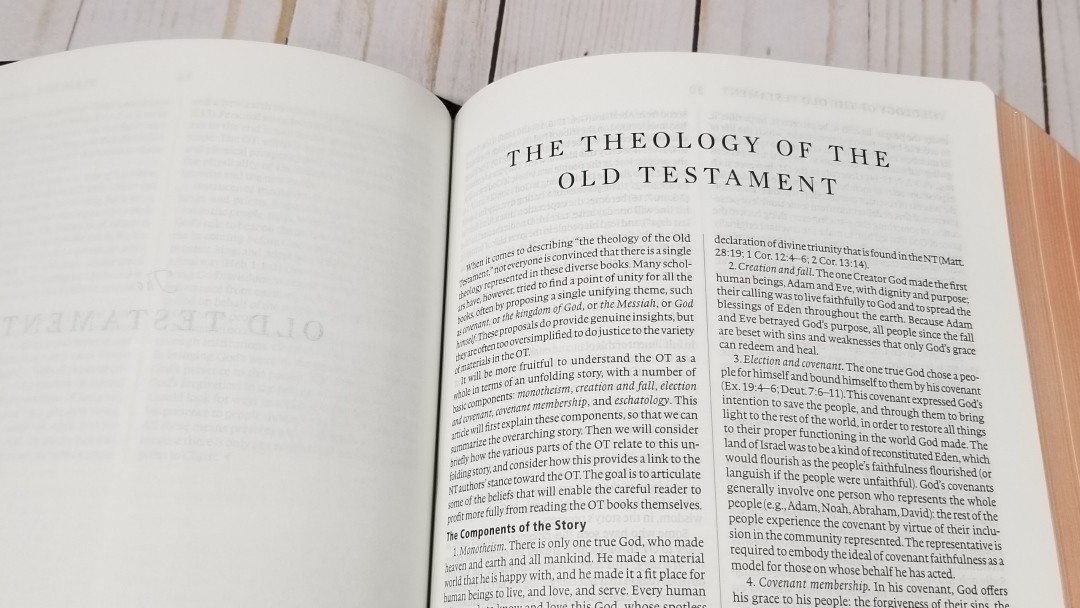
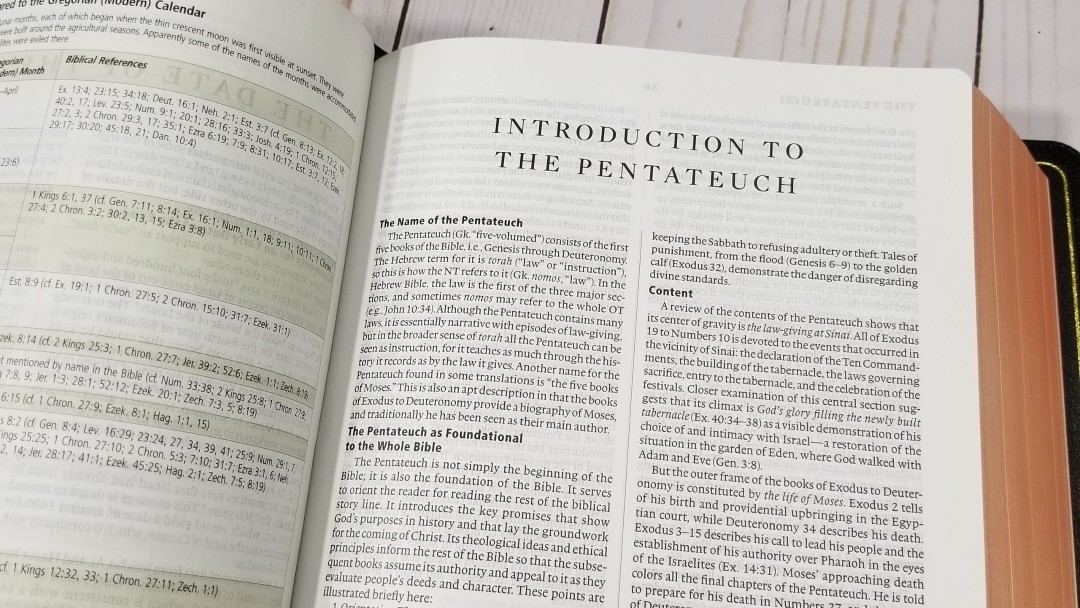
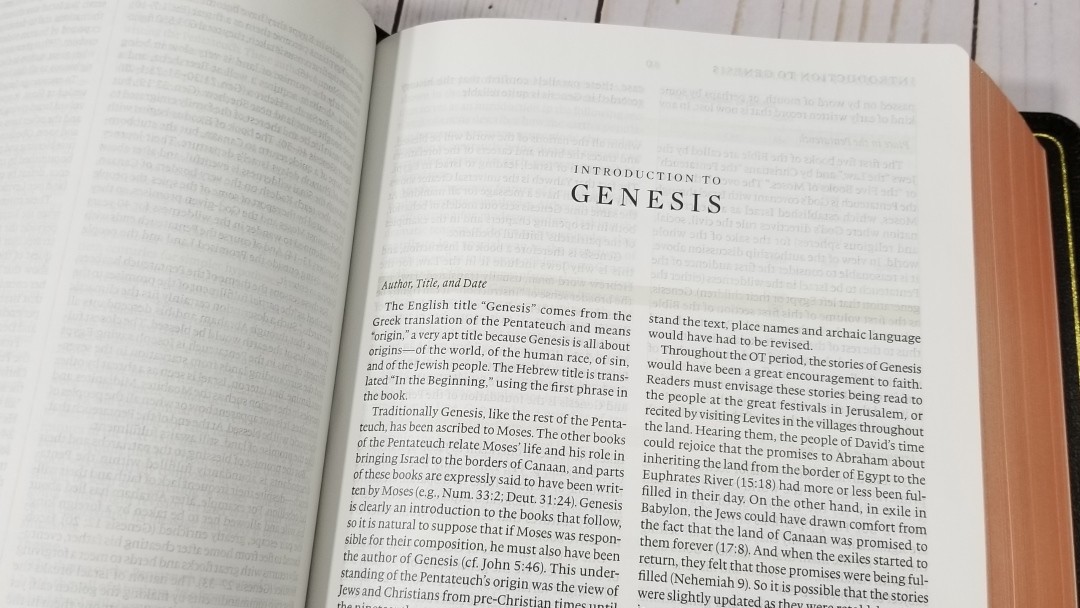
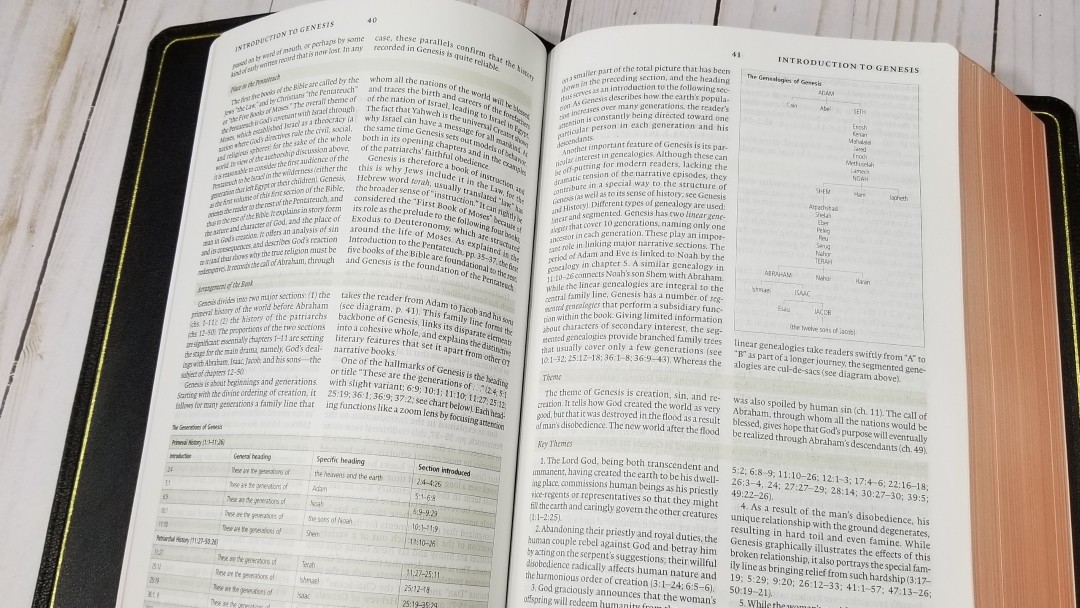

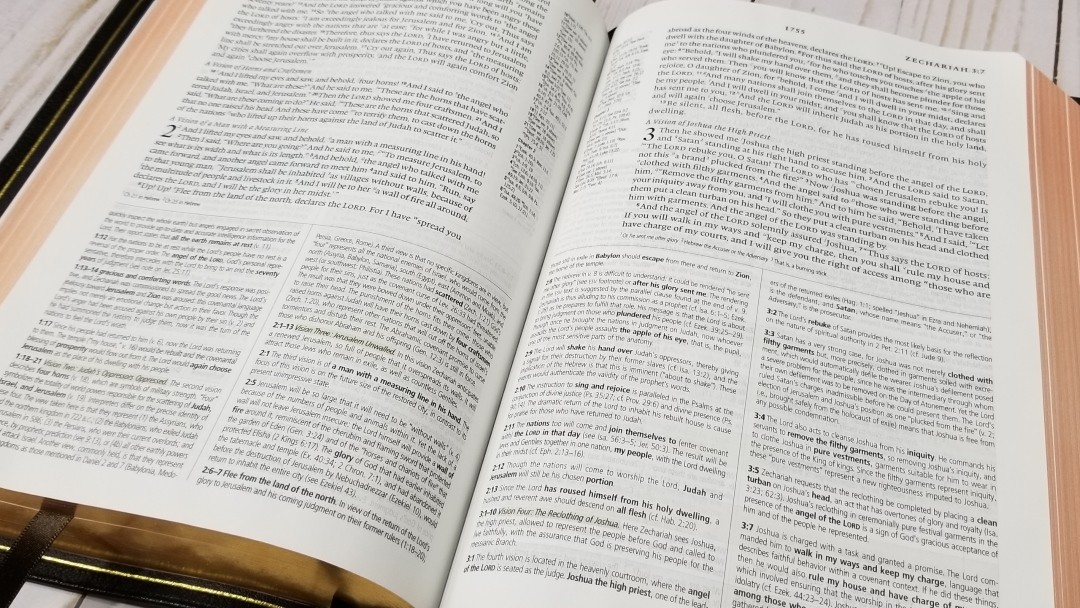
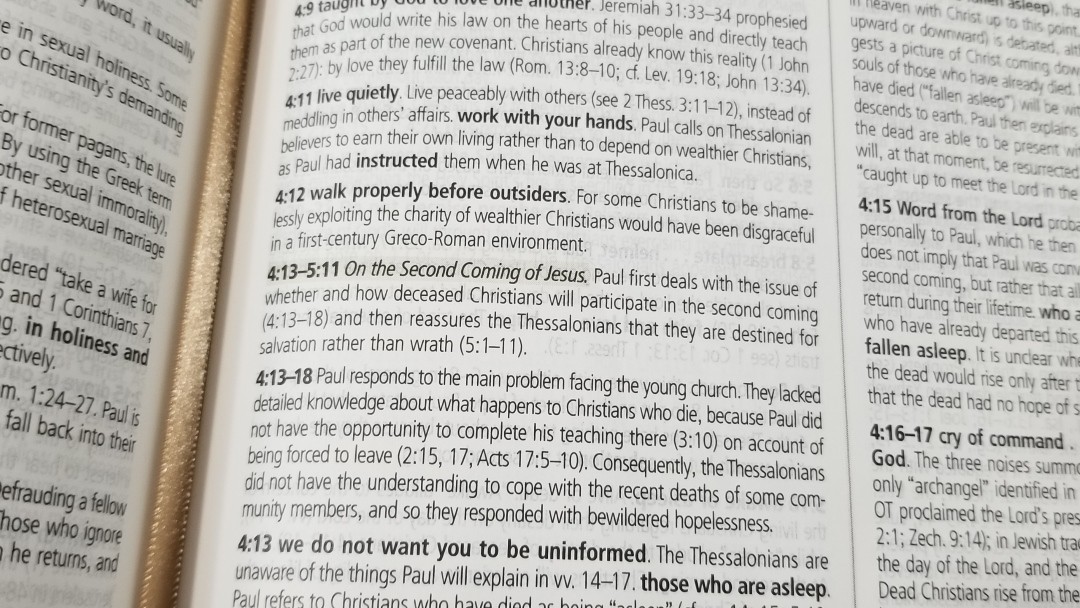

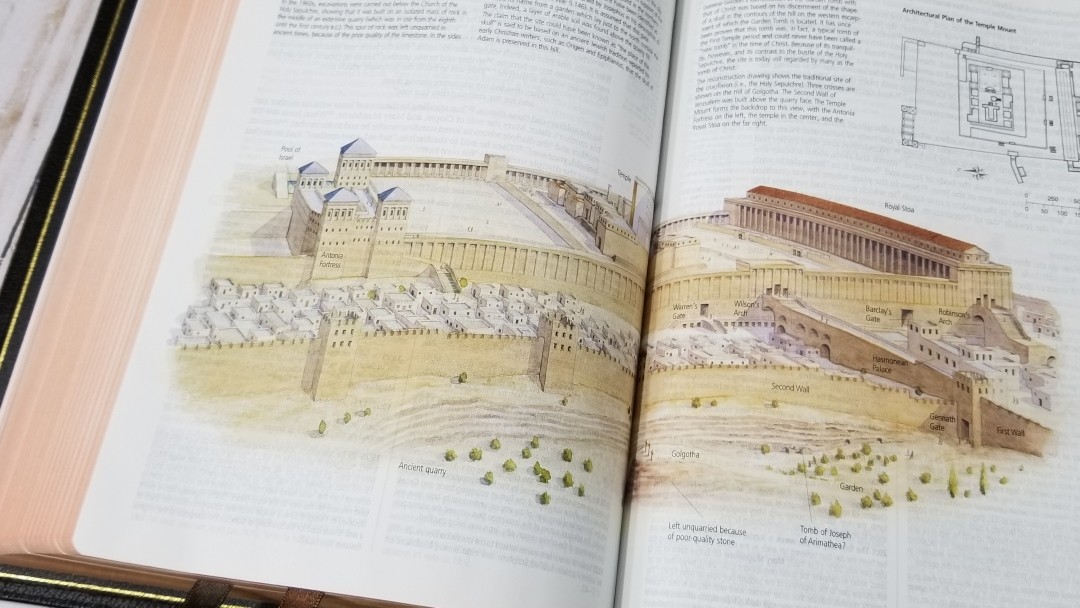
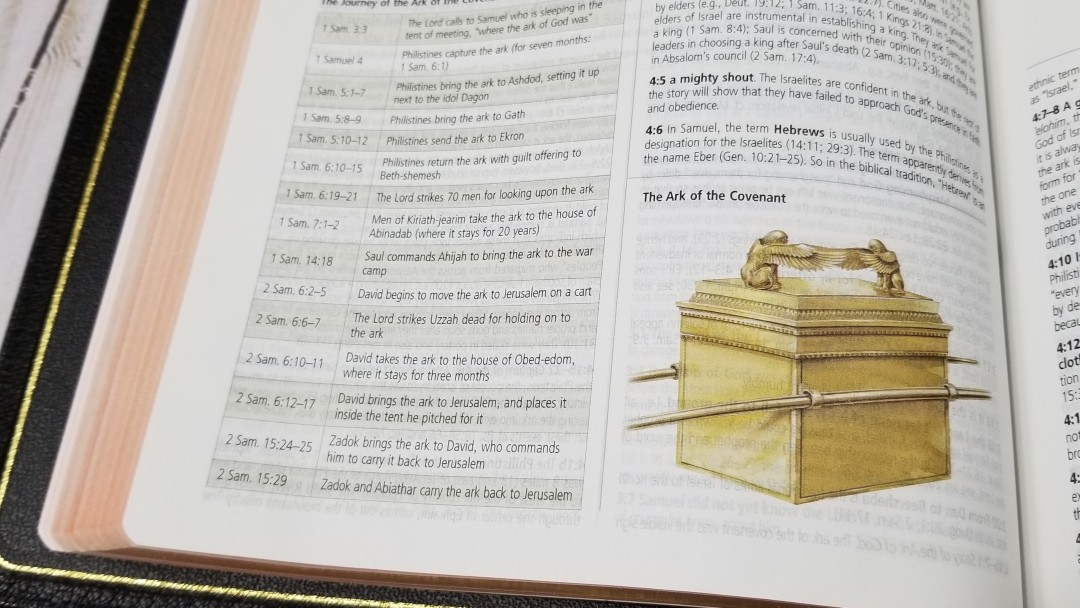
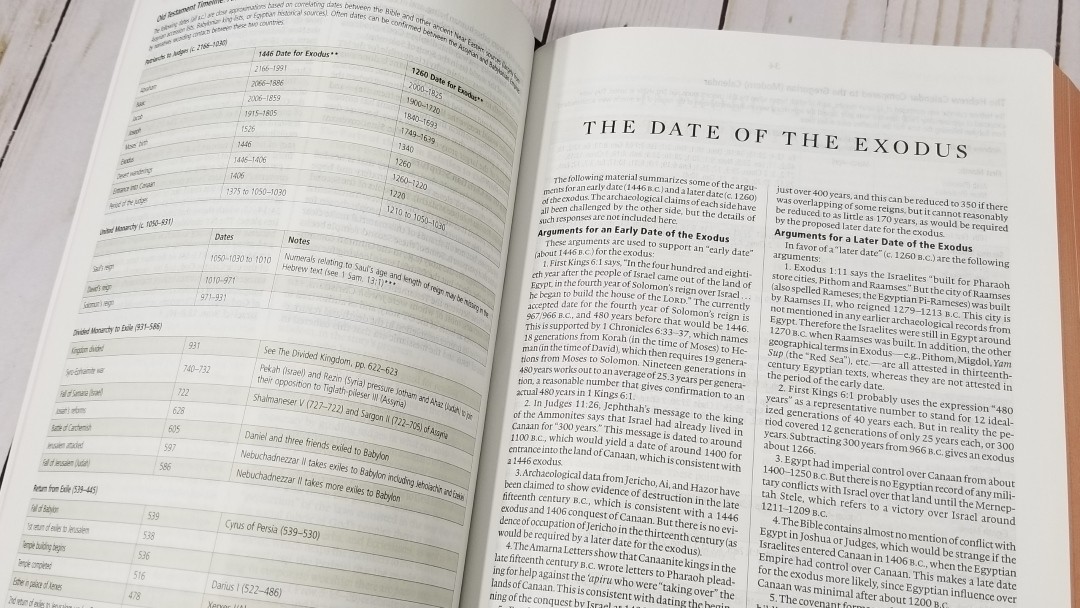
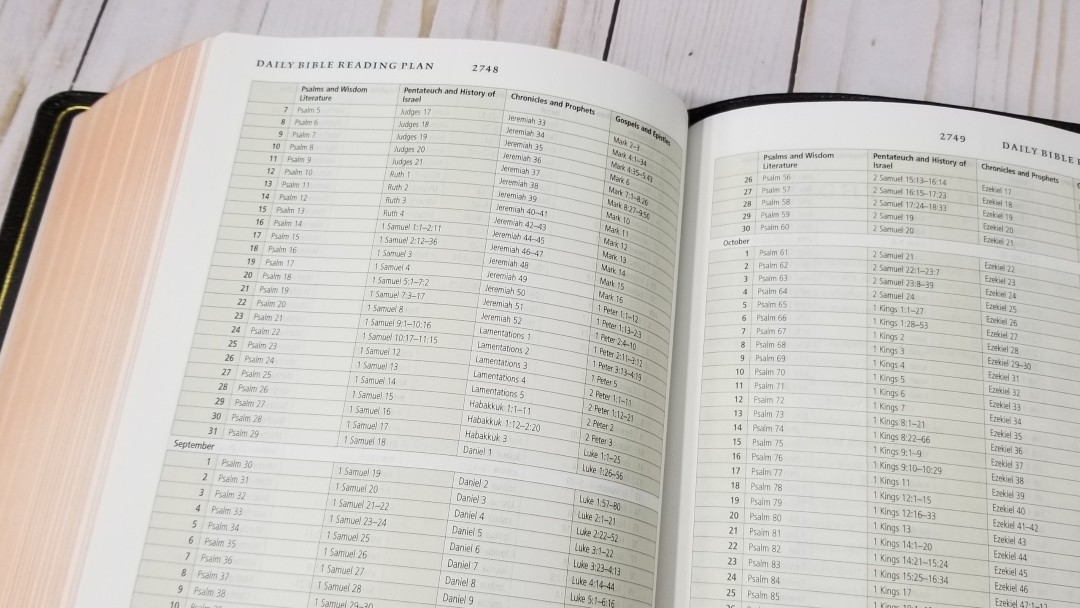
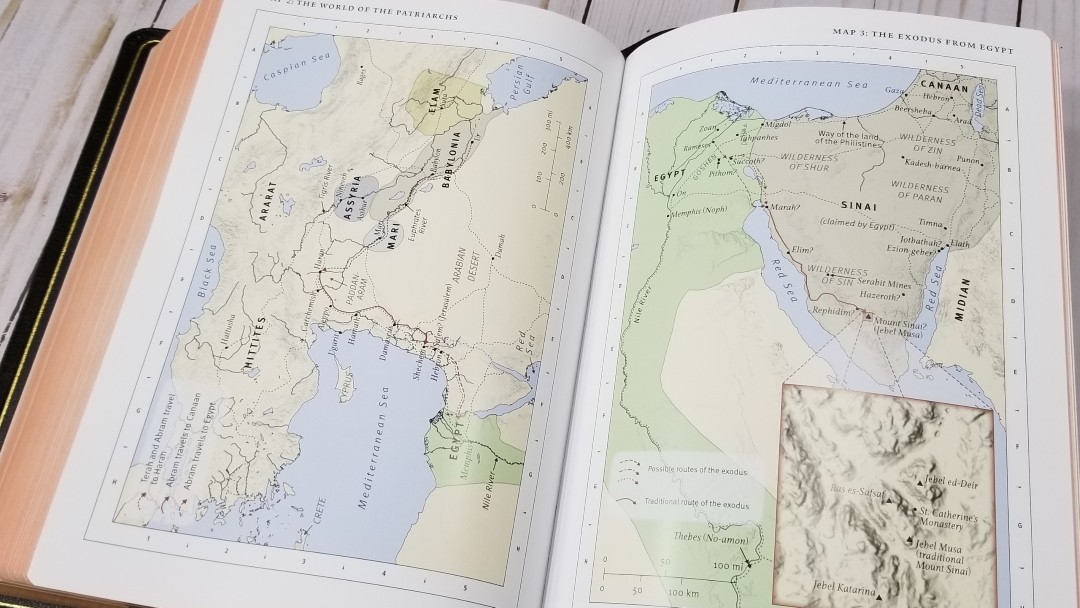

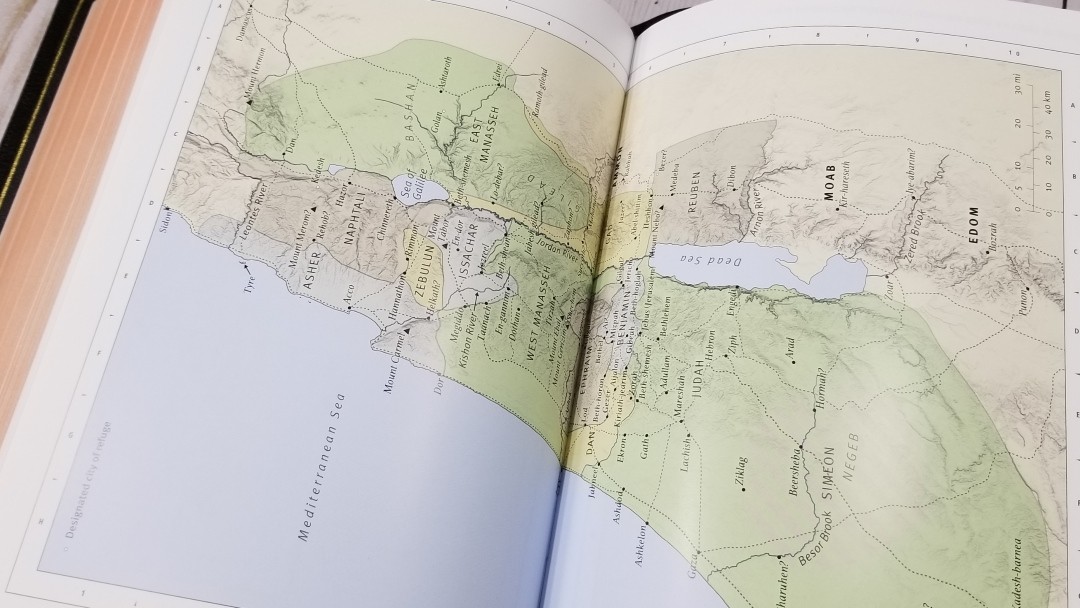
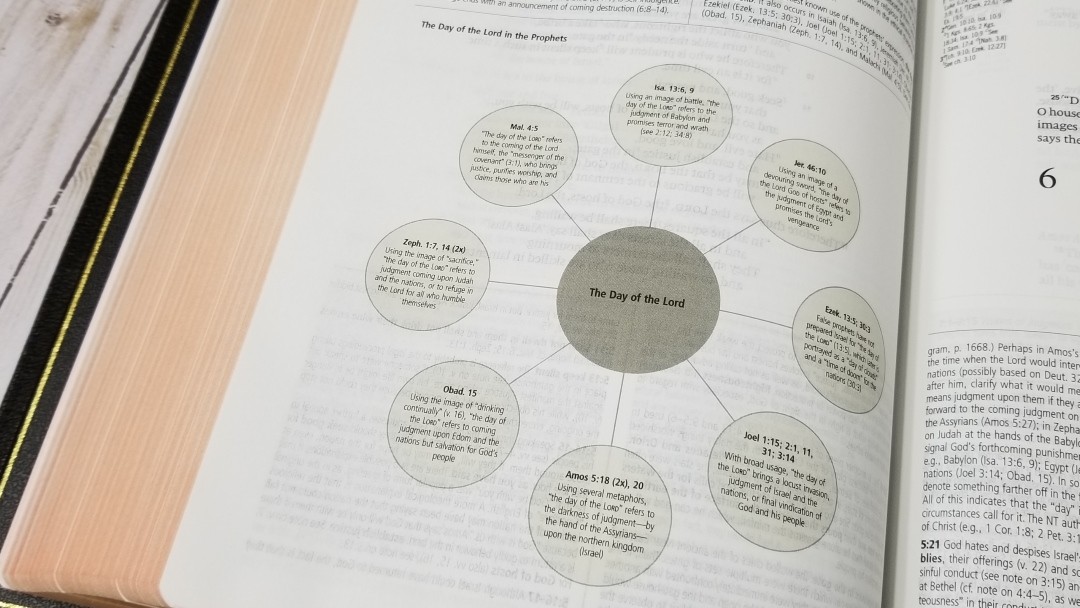
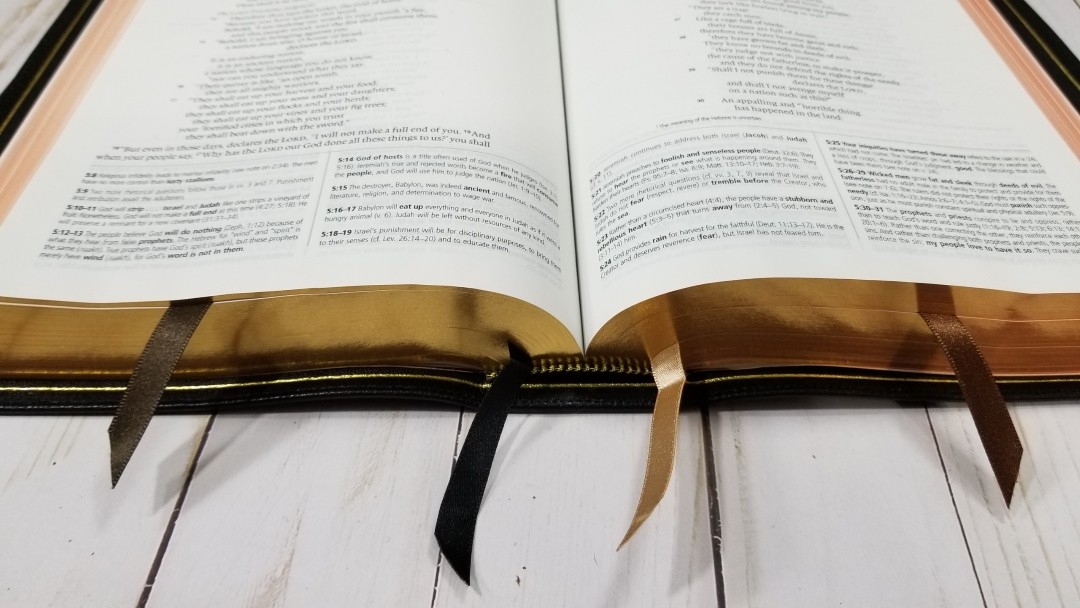
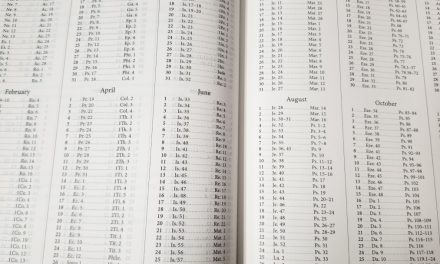


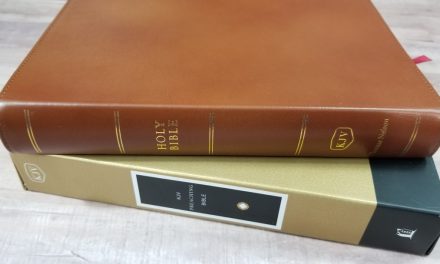





This study Bible looks great. How did the font size seem to you? Did you have difficulty reading it?
Hi Jeremy. I had no trouble reading it. I wouldn’t call it large print, but it is larger than many study Bibles. It about the size of the Legacy.
The more I use Study Bibles, and the more I show them to those of a literary bent, the more I am convinced that text and translational notes and cross-references should be on one page and all other matter on a facing page. ….And we really should be thinking of producing both verbal/textual and thematic/topical references in modern Bibles.
What s the difference between the study bibe and the heirloom study bible?
The Heirloom edition has higher quality materials and construction.
One more question. I am looking to get an ESV study Bible, large print. Could you tell me which should last longer, the imitation leather, or the bonded leather?
Hi Jeremy. Good question. I ran it by my contact at Crossway and they said they’re about the same. They recommended genuine leather, as it would last longer than both.
Thanks for the comprehensive review; very helpful. Will be purchasing one after I write this comment.
Thanks!
I’m trying to find this buy to purchase. Any idea where it would be available? Any idea is Crossway will reprint it?
Hi Kyle. I haven’t seen it for sale or heard anything about a reprint. I’ll ask my contact at Crossway if they have any news.